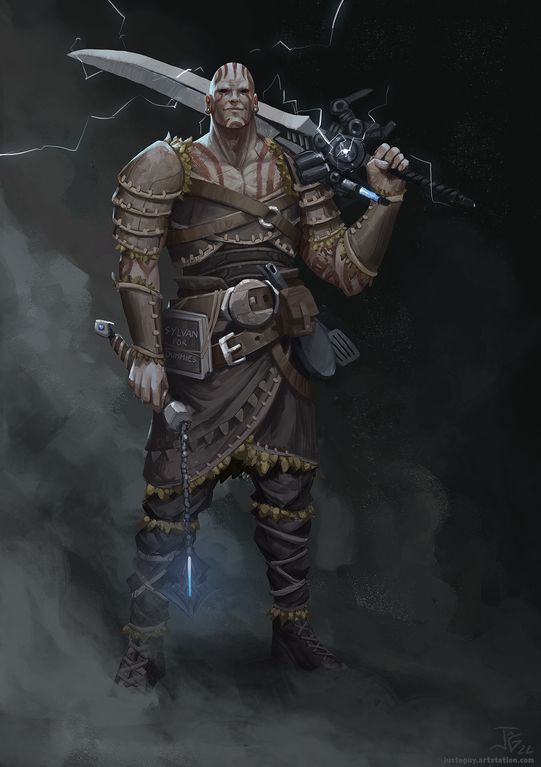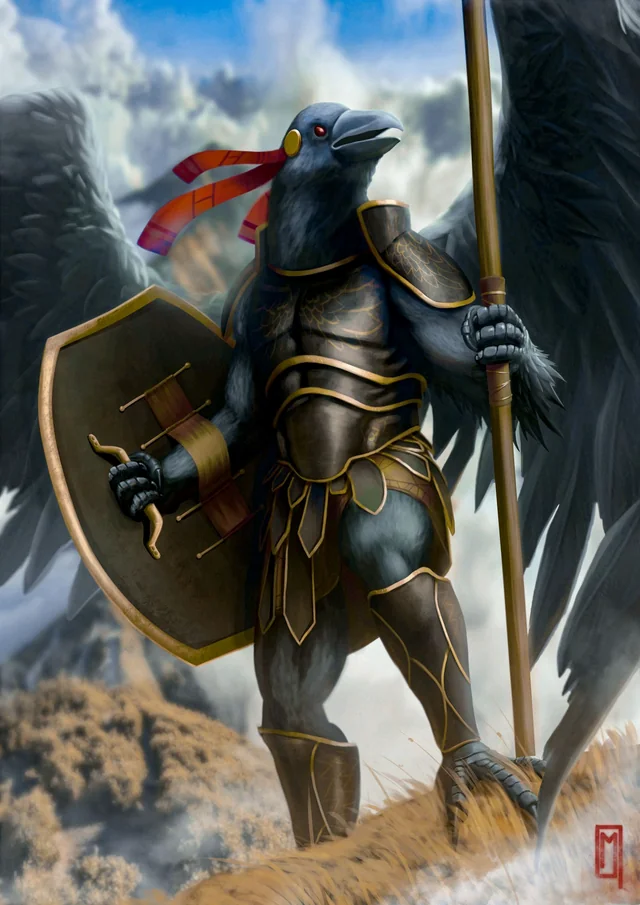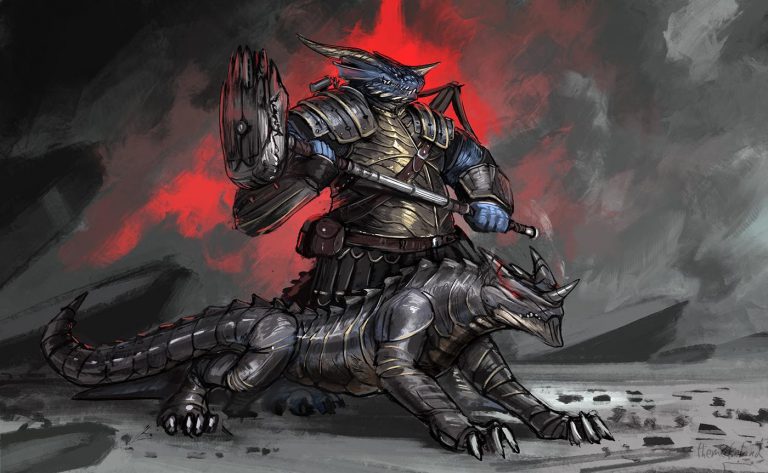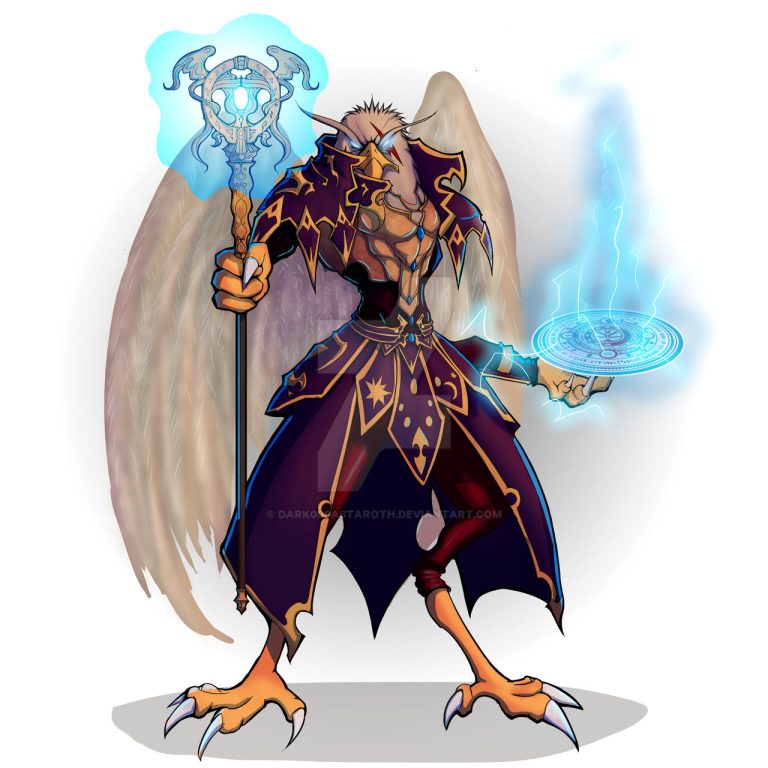D&D 5e: Goliath Blood Hunter Guide

D&D 5e: Goliath Blood Hunter Guide
The world is always in peril. There’s always another monster terrorizing the smallfolk. Always another apocalypse on the horizon that must be dealt with.
And who better than the literal Goliath, wielding weapons most couldn’t even lift backed by arcane wrath? This quick start guide for the Goliath Blood Hunter breaks down how to build the character, how to play it, and how to RP this fantastic combination.
How to Make a Goliath Blood Hunter
The Blood Hunter is one of the most complicated classes in the game, on par with the Paladin in stat dependency and resource tracking.
The class gains access to full proficiencies in weapons and up to medium armor, plus Fighting Styles, in the same manner as a Fighter. This means all weapon types are available, which is where the first decision point for the class is found:
If you want to use two-handed weapons, generally you will want to boost your Strength as high as possible.
If instead, you want to use one-handed weapons or archery, increase your Dexterity instead.
Secondly, Blood Hunters have a swathe of magical abilities available, which can be fuelled by either Intelligence or Wisdom. This choice feels relatively minor but affects your skills, saves, and any potential multiclassing. If possible, choose Wisdom.
Finally, any free points should be put into Con. As a class that wants to fight its enemies directly, the Blood Hunter also requires high HP, especially considering one of its key abilities costs their own HP to activate.
The Goliath racial lineage pushes the build toward a melee brawler. The first bonus is a flat reduction in damage that can be used multiple times per day. On top of this, the race has an innate resistance to Cold damage, as well as high altitudes, if that ever comes up in your campaign.
Finally, the Goliath has free proficiency in Athletics, as well as a bonus to carrying capacity, both very useful for Strength builds, especially those crazy enough to try and grapple a dragon.
For a martial class, the Blood Hunter is deceptively good at skills, gaining three skills at level 1 instead of the usual 2, as well as stats to fuel them and bonuses to the skills it might want to use. Perception, Survival, and Stealth are all excellent choices, as are the knowledge skills that cover your favored targets.

How to Play a Goliath Blood Hunter
Blood Hunters as a class revolve around two things. First, find the monster. Then kill the monster.
Finding monsters shouldn’t be complicated unless your GM insists on making things difficult for you. The class even gains a bonus for tracking down many of their favored enemy types.
To actually kill their enemies, the class gains two major bonuses. The simplest is the Crimson Rite, available from level 2.
Crimson Rite can be used an unlimited amount of times per day and provides a constant elemental damage bonus to the weapon in your hand. The only limitation is that the ability also deals a small amount of damage to you as an activation cost, which can’t be reduced by your class feature.
But the buff to damage is worth it, especially once the class gains Extra Attack at level 5 and lasts until you rest or you put your weapon down. Many abilities also trigger from your Crimson Rite. Get used to activating this at every opportunity.
The second major power available to Blood Hunters is the Blood Curse. These are powerful single-use effects that almost feel like spells, and can utterly shut down encounters on a failed enemy save.
Example effects include: Reducing an enemy’s speed to 0, so they can’t move, stripping a target of damage resistances, or directly reducing an enemy’s attack rolls.
Curses can also be buffed, increasing the effect and letting them affect any target, by, of course, choosing to take a small amount of damage.
All of these abilities are equally as useful in melee or at range, so the choice of how you approach combat is open and entirely up to you, the player. The only recommendation we give is to specialize, at least in your early levels, as 5e rewards a character that chooses to be good at one specific thing rather than spreading themselves wide.
The Blood Hunter only has four subclasses, called Orders:
The Order of the Lycan is the simplest, and one which synergizes incredibly well with a Goliath both mechanically and thematically. It gives the build a proto-Barbarian’s Rage mechanic as an hour-long transformation, boosting damage and making the class much tougher, with only a slight chance to go crazy and maul their allies to death. (Seriously.)
Higher levels increase uses of the transformation ability, boost damage further, and add a constant regeneration effect that means the character will rarely be at less than full HP.
The Order of the Ghostslayer, as the name suggests, hates the undead really hard. It learns a unique and powerful Crimson Rite, free bonus damage, and the ability to walk through walls so that no enemy can ever truly escape them. In theme and feel, it’s a very holy warrior, and well worth playing.
The Order of the Mutant is complicated and doesn’t gain much for the overwhelming amount of options on offer. The subclass isn’t weak. After all, it is based on the Witcher series, but requires advanced preparation and stacking of potion-based mutagenic buffs, making it ideal for players who like to plan out every attack.
Finally, the Order of the Profane Soul adds some actual magic to the class, layering on Warlock spellcasting and benefits. Oddly enough, probably the largest bonus here is the availability of Cantrips, including the almighty Eldritch Blast.
This is backed up by a slowly leveling version of the Warlock’s Pact Magic ability, including spell slots that refresh on short rests, as well as free spells as you level. Is it the most effective subclass in raw numbers? No. But it is flexible, fun, and very very flavorful.
Outside of combat encounters, the Blood Hunter lives up to its name. The class can be built to be the best at tracking down enemies, spotting ambushes, and discovering the weaknesses of what the party is about to face.
Sadly, the class has no social benefits built-in, besides the Insight skill, which it can be surprisingly good at. Just … don’t expect to keep up with the party Bard.
How to Roleplay as a Goliath Blood Hunter
Goliath culture revolves around personal strength and competence. Around pushing oneself to ever higher heights, sometimes to the point of self-destruction, finding limits and surpassing them, again and again.
What better reason to hunt down the worst the world has to offer, and overcome it at the point of your blade, or fall in the attempt?
A typical Goliath Blood Hunter might be gruff and taciturn on the hunt, like a drill master with recruits, who erupts into wild, gleeful abandon when the battle is joined, or when the tale is told in the tavern a night later.
Others might see themselves as the shield of civilization, concerned not just with themselves, but with their companions and the wider world, content to die fighting and write the epic saga of their own life at the same time.
It’s also worth remembering that Blood Hunters tend to have decent mental stats, and stories are full of academic adventurers of the eldritch and obscure, from Van Helsing to Indiana Jones. Idiosyncrasies like this are fun at the table, and even a random skill or tool proficiency can add a ton of flavor to a build, especially if you make up a short tale to go with it.








